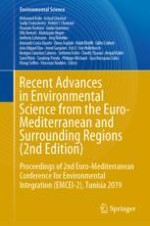2021 | OriginalPaper | Chapter
Impact of Dietary Fibers on the Biochemical Markers of Bone Remodeling in Hemodialyzed Postmenopausal Women (Algeria)
Authors : Fatima Mehenni, Boumediene Meddah, Aicha Tir Touil Meddah
Published in: Recent Advances in Environmental Science from the Euro-Mediterranean and Surrounding Regions (2nd Edition)
Publisher: Springer International Publishing
Activate our intelligent search to find suitable subject content or patents.
Select sections of text to find matching patents with Artificial Intelligence. powered by
Select sections of text to find additional relevant content using AI-assisted search. powered by
